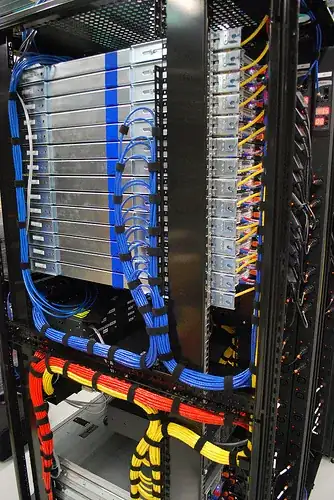I'm redoing the cable management for a small company with a modest server room. It's my first time trying to organize an absolute mess that their former IT-guy left.
A huge problem that I'm finding is that very long Ethernet cords were used where short ones should have been used. I assume the IT guy was just too lazy to make a one foot cable that would fit nicely, and instead opt'ed to grab the nearest 10 foot cable. Repeat this two-dozen times and its a real mess.
As I'm going about making new cables and replacing existing ones, I'm wondering if there are any sorts of best practice methods for determining the exact cable length needed in server rooms besides obviously just using a measuring tape. I'm taking a measuring tape and trying to determine how long it is from point A to point B (routed properly and neatly).
I see so many excellent pictures of nicely wired server rooms where all the wires look very tight and neat and it looks like the cables were cut to be EXACTLY the right length in every situation. Do the pro's who do those awesome jobs really measure out each required length for every single port? Or do they have some tricks up their sleeves for quick length calculations?

